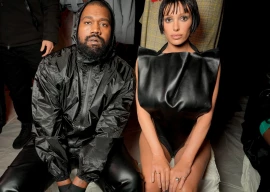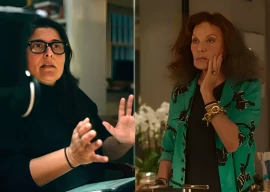
LONDON:
Weighing five kilos, with a perfectly combed mane and eyes shut blissfully, Abby resembles a real child. But she is actually a doll adopted by a grieving mother, who lost her own child to leukaemia.
“She reminds me of my daughter as an infant,” said Eve Hasty, a 57-year-old American who bought Abby from for 300 dollars.
Even though she has an eight-year-old granddaughter, Hasty finds comfort in mollycoddling the life-like toy.
“I just get a type of serenity about me when I hold her, I change her clothes,” she said wistfully.
Hasty has bought Abby a wardrobe full of outfits, including a tiny pair of Nike trainers.
“When my daughter was born, money was tight, we had a budget. This time, I could be extravagant,” said the mother, who lost her real daughter more than three decades ago.
Hasty says she is well aware of what Abby is. “I am not confused, I don’t think she is real,” she revealed.
But she stressed: “To me she is not a doll, she is so much more. I know she is not going to get sick and die. It takes such a pressure off.”
Nikki Hunn, the 35-year-old British designer who created Abby, said most of her clients are collectors. Yet she reveals that she has made a dozen “reborn babies” for bereaved mothers, a trend which has picked up in the United States, Britain and Australia.
As the niche market burgeoned, the International Reborn Doll Artists, was created in 2005 to promote “cutting edge” techniques of creating these uncannily realistic creatures.
The plastic limbs come as close as is possible to human flesh, filled with beads to mirror an infant’s weight. The skin is coloured at the cheeks and eyes are made puffy like those of newborn babies. Nails are drawn onto tiny fingers, thin strands of mohair are sewn into the scalp, while a glistening touch of saliva at the mouth completes the effect.
The dolls are disturbingly real, and that’s the intention. One client even gave Hunn a picture of a baby to copy.
“I had a couple of comments: ‘Oh my God, they look so realistic’, ‘Get that thing away from me, they creep me out’,” Hasty admits.
But she finds this offensive. “I take it personally, it’s like being told your child is creepy.”
Psychologists are divided on the benefits of such substitutes.
Ingrid Collins, a consultant psychologist at the London Medical Centre, says a fake baby “could create more problems than it solves”.
“When you have mourned the death of the child, what do you do? Do you bury it again?” she questioned.
“If people naturally want to care for something and if they have a lot of love to give and no baby to give it to, there are lots of living souls who do need that love and attention.”
But Sandra Wheatley, a psychologist specialising in family issues, claims that a “reborn baby” could be helpful for mothers as a “physical tool to help them mourn the one that they have lost”.
“It allows them to adjust slowly at their own pace to a situation that they do not want to be in,” she explained. “The use of the doll as a transitional tool could be a very healthy thing, as long as it does not go on too long.”
Today, hundreds of such dolls can be found for sale on websites like eBay — including different ethnic models and even a reborn baby orangutan — with starting bids that can run up to 800 and 900, even 3000 dollars.
Published in The Express Tribune, May 31st, 2011.








































COMMENTS (1)
Comments are moderated and generally will be posted if they are on-topic and not abusive.
For more information, please see our Comments FAQ